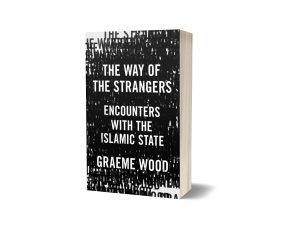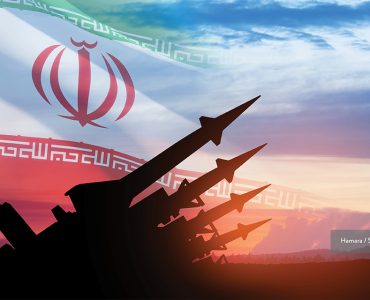Well before the Islamic State declared itself a “caliphate,” its leaders announced their aim plainly. But few took them seriously.
“Our objective,” stated one of its spokesmen, “is the formation of an Islamic state on the prophetic model that acknowledges no boundaries, distinguishes not between Arab and non-Arab, easterner and westerner, but on the basis of piety. Its loyalty is exclusively to God: it relies on only Him and fears Him alone.”
Having promised to establish such a caliphate — a society on “the prophetic model,” ruled by sharia (or religious law), a society indifferent to ethnicity and nationality, united only by faith — the Islamic State did exactly that on conquered territory, with its capital in the city of Raqqa (previously in Syria).
Having promised to “acknowledge no boundaries,” ISIS worked globally to spread its vision of a political-social order defined by sharia, leveraging social media and disseminating highly produced propaganda articles, magazines, videos.
Having promised loyalty “exclusively to God,” the group took the fight to the enemy: unbelievers. It inspired, fomented, and directed deadly attacks on infidels in London, in Manchester, in Brussels, in Ankara, in San Bernardino, California, in Orlando, Florida. Hit especially hard was Paris. In January 2015, jihadists massacred journalists at Charlie Hebdo and carried out a deadly siege at a kosher supermarket. Then in November, a squad of jihadists shot up sidewalk cafes and set off suicide bombs outside a soccer stadium and at a music venue, killing 130.
But the reaction of many intellectuals and politicians was denial. A common mantra held that the Islamic State has “nothing to do with Islam” — an echo of the Bush administration’s assurance that the 9/11 attackers had hijacked a noble religion. The repetition of this phrase seemed to imply that wishing will make it so.
While jihadists were blowing themselves up on the streets of Paris and murdering people at a gay nightclub in Orlando, the prevailing notion was that the Islamic State was animated by something other than — anything but — an Islamic vision for society.
Pushing back against such self-delusion and denial, two incisive books challenge that conventional outlook. Graeme Wood’s The Way of the Strangers is an exploration of the Islamic State phenomenon. Contrary to commonly held views, Wood shows that the Islamic State’s beliefs, its magnetic appeal for tens of thousands of followers, and the group’s social-political aims are all deeply rooted in Islamic ideas. Gilles Kepel’s Terror in France examines how Islamist ideas came to be “firmly implanted in France.” What’s especially illuminating in Kepel’s account is his analysis of a distinctive jihadist strategy focused on Europe. In contrast to previous strategies, it entails fostering among Muslims within France a primarily religious identity and pitting them against secular society.
Taken together, these two books cast a bright light on the essentially religious motivation that unites Islamists.
Islamic State’s deeply religious character
Once the Islamic State had realized its vision of a caliphate, it was unashamed — indeed, proud — about its application of sharia punishments, for blasphemy (execution), fornication (stoning; for some, a hundred lashes and banishment for a year), homosexuality (execution), theft (cutting off the hand), drinking wine (eighty lashes), apostasy (execution). Moreover, the Islamic State endorsed the institution of slavery, permitting its fighters to take captured women as sex slaves. The Islamic State’s propagandists mocked Muslims who denied the legitimacy of such barbarous practices.
The Islamic State’s political-social vision and barbaric practices, Wood shows, are firmly grounded in Islamic religious texts and tradition. The group’s sincerely held beliefs form “a coherent view of the world rooted in a minority interpretation of Islamic scripture that has existed, in various forms, for almost as long as the religion itself.”
The group belongs within the Salafi tradition of Sunni Islam. The term “Salafi” derives from an Arabic term meaning “pious forefathers,” referring to the first three generations of Muslims. In Wood’s summary, “Salafis take the Koran, the example of the Prophet, and the actions and beliefs of these men and women as their primary sources of religious authority, and they reject the opinions of many Muslims who came later.” They reject other sects, notably the Shia, for their “innovative” practices, and regard themselves as the chosen sect of real Muslims.
 The Islamic State regards itself as meticulously following the beliefs and example of Islam’s founders. Just as they waged holy war, so does the Islamic State. The practices that horrify us — slavery, beheading — are well supported in holy texts and a long history. “These practices may be rejected by mainstream Muslim scholars today,” Wood writes, “but for most of Islamic history, it barely occurred to Muslims to doubt that their religion permitted them.” There is hardly a text on Islamic laws of war, in the pre-modern period, that “neglects to mention the rules concerning enslavement of women and children.” Slavery was practiced by “Muslims for most of Islamic history, and it was practiced without apology by Muhammad and his Companions, who owned slaves and had sex with them.” Moreover, to doubt that “apostasy has ever been a capital crime is a misreading of scripture and history.”
The Islamic State regards itself as meticulously following the beliefs and example of Islam’s founders. Just as they waged holy war, so does the Islamic State. The practices that horrify us — slavery, beheading — are well supported in holy texts and a long history. “These practices may be rejected by mainstream Muslim scholars today,” Wood writes, “but for most of Islamic history, it barely occurred to Muslims to doubt that their religion permitted them.” There is hardly a text on Islamic laws of war, in the pre-modern period, that “neglects to mention the rules concerning enslavement of women and children.” Slavery was practiced by “Muslims for most of Islamic history, and it was practiced without apology by Muhammad and his Companions, who owned slaves and had sex with them.” Moreover, to doubt that “apostasy has ever been a capital crime is a misreading of scripture and history.”
Wood’s book, which grew out of an influential article at The Atlantic, weaves together the history of the Islamic State, the religious basis for its views, and profiles of some of the group’s followers and sympathizers. These portraits are fascinating, because Wood is disarmingly polite, yet relentless, in drawing out their beliefs. For example, we meet an Australian convert who became a YouTube preacher. Like many followers of ISIS, he sincerely believes in the goal of the caliphate and the group’s effort to hasten a literal apocalypse.
From these profiles and Wood’s analysis of the Islamic State, we also learn why counter-explanations for ISIS, which emphasize nonreligious factors, fall apart. Aren’t the soldiers of Islamic State simply psychopaths? What about the jihadist fighters who appear largely ignorant of Islam? Or the claim that the Islamic State was at its core a group of former officials of Iraq’s ruling Baath Party? Wood convincingly refutes each of these counter-explanations. A “crushing weight of evidence” shows us that “religion matters deeply to the vast majority of those who have traveled to fight.”
Part of what emerges from these profiles is how religion is a “way of thinking and living,” providing a kind of “culture unto itself.” Being an Islamist, we learn, is in significant part adopting a religious identity.
Wood also responds to the counterargument that Islamic State is a minority sect within Islam. It is. But every religion has minority sects that coreligionists find embarrassing or abhorrent. Think of the Westboro Baptist Church, whose followers believe that “God hates fags.” Yet, Protestants have to recognize that the group’s members study the Bible and believe Jesus died for their sins: they are fanatics, but they are Christian fanatics. And being a minority sect means just that. It’s a separate issue whether a minority sect’s interpretation is legitimate, which turns on questions of dogma.
The fact remains that “the Islamic State consults the same texts as other Muslims, and dips into the same Sunni historical tradition. The Islamic State’s scholars do not cite Marx, the philosophes, the laws of Manu, or Paul the Apostle. They cite Koran, hadith, and carefully selected thinkers within the Islamic tradition. Their fanaticism is a Muslim fanaticism.” The upshot is that even Muslim critics of ISIS are “compelled to acknowledge that the group is led and supported by Muslims, albeit Muslims with whom they vociferously disagree.”
Given the evidence, Wood observes, it “takes astonishing levels of denial to claim, as uncountable Muslims and non-Muslims have, that the Islamic state has ‘nothing to do with Islam,’ merely because the group’s heinous behavior clashes with mainstream or liberal Muslim interpretation.” After studying jihadists and their sympathizers, Wood reflects that he “came to think of them as the visible surface of a cause that was stirring the emotions and convictions of tens of millions of others, and that would continue to inspire them for decades to come, even if it [Islamic State] lost its core territory in Syria and Iraq.”
How that same cause has stirred the emotions and convictions of so many in France is a major focus of Gilles Kepel’s Terror in France.
Fostering an Islamist identity
Behind the 2015 eruption of jihadist violence in France, Kepel writes, there loomed “the implantation of Salafism — a model for breaking with the values of the [French] Republic and its secularism.” This “is not an isolated phenomenon — and later jihadi developments in Belgium and Germany showed that it is not exclusively French.” Kepel argues that this implantation has followed a distinct strategy which entails fostering a primarily religious collective identity among French Muslims.
This strategy, Kepel argues, contrasts with the approaches in earlier waves of the modern jihadist phenomenon. The first, roughly 1979 to 1997, centered on waging a holy war in Afghanistan, Algeria, and Bosnia. The next (1998–2005) was marked by Al Qaeda’s rise to prominence: the attack of September 11, 2001, embodied a new strategy of targeting the “far enemy,” the United States. From 2005 onward, Kepel argues, we can observe a third strategy emerging. A driving force behind it is Abu Musab al-Suri, an Islamist ideologue. The al-Suri strategy focuses on fomenting war on European soil. The idea is to recruit European Muslims, notably second generation immigrants, to carry out violent attacks. Gradually, such attacks lead to wars that destroy the West. Thus a path is cleared for a world dominated by sharia rule.
Key to this strategy is inducing French Muslims to embrace Islam as their primary identity. Reinforcing that goal is another, related one: to alienate them from secular society, so that they eventually take up arms against it. Facilitating these goals was the growing cultural influence of Islamic advocates, who vied to dominate France’s Muslim communities. Muslims were encouraged to become self-assertive about their religious identity, for example, on the issue of wearing the Islamic veil, respecting the halal diet, and demonizing same-sex marriage. Such issues moved to the fore as growing numbers of Muslim citizens began to vote, run for public office, and lobby their representatives.
 More and more in the banlieues — suburbs of Paris and other cities mainly populated by immigrants and their descendants — Islam was becoming “an irrepressible marker of identity.” According to Kepel, it is “undeniable that Islamization is now more widespread in the banlieues of France” than it was thirty years ago. In some banlieues, for example, “it has become socially difficult or even impossible to break the daytime fast in public during Ramadan if one ‘looks like’ a Muslim.”
More and more in the banlieues — suburbs of Paris and other cities mainly populated by immigrants and their descendants — Islam was becoming “an irrepressible marker of identity.” According to Kepel, it is “undeniable that Islamization is now more widespread in the banlieues of France” than it was thirty years ago. In some banlieues, for example, “it has become socially difficult or even impossible to break the daytime fast in public during Ramadan if one ‘looks like’ a Muslim.”
The impact of this trend was manifest not only in the jihadist attacks in Paris in January 2015, at Charlie Hebdo and a kosher supermarket. It was also evident in the reactions to those attacks by segments of the country’s Muslim community.
The ringleader of the attacks, Amedy Coulibaly, followed a path to jihad that fit the al-Suri strategy. Important in his path was the formation of an Islamist identity — and a growing hostility toward France’s secular society. He was a small-time criminal, repeatedly imprisoned. Prisons in France, Kepel notes, are incubators for jihad, and, like many other released prisoners, Coulibaly emerged with a deeper commitment to the Islamist cause. Before launching the attacks in January 2015, Coulibaly recorded a detailed video statement justifying the attacks and anticipating his own martyrdom. Kepel’s analysis of this video is illuminating. Coulibaly disavows his identity as a French citizen, and instead views himself — and encourages others to view themselves — first, and above all, as a Muslim. The basic narrative of Coulibaly’s video presents him as fighting in “self-defense” against an infidel, “Islamophobic” society of which he, like all Muslims, is a victim. A goal of the video is to encourage other Muslims in Europe to emulate Coulibaly’s violent attacks — and in fact, in the ensuing months and years, some did.
The Coulibaly-led attacks elicited a massive public reaction. Not only within France, but also globally, the empathetic hashtag #JeSuisCharlie (I am Charlie) trended for days. On the streets of Paris, millions came out with signs bearing that slogan and held aloft pencils, symbolizing freedom of speech. World leaders, arms interlocked, led a march through Paris.
Less noticed, however, was the reaction of some Muslims in France. For them, the reassertion of the nation’s secular ideal and the principle of free speech meant endorsing blasphemy against their religion. In their view, the million-strong march after Charlie Hebdo was a further manifestation of “Islamophobia.” Online, other hashtags began surfacing: #jenesuispasCharlie (I’m not Charlie), #cheh (“well done!” in North African Arabic), and #JeSuisCharlieCoulibaly. This last hashtag honored Amedy Coulibaly.
Kepel’s book is an in-depth case study, which delves into France’s political and cultural scene. At times the analysis dwells on minute details while the book’s overall logical structure fades from view. Nonetheless, Kepel offers some worthwhile comments on the rise of nationalist and racist groups. Particularly eye-opening, though all too brief, is his perspective on the French Left. He argues forcefully that elements of France’s political Left have contributed to obscuring the true nature of jihadism and its impact in France.
Finally, some aspects of Kepel’s argument are not fully developed or convincing. For example, Kepel seems to regard the complaints of “Islamophobia” as largely, or exclusively, contrived. On that assumption, his analysis bears out how such complaints serve an Islamist agenda. But he does not unpack this confusing idea of “Islamophobia.” The concept mashes together, on the one hand, legitimate scrutiny, criticism, and debate of Islamic ideas and, on the other, actual cases of anti-Muslim prejudice. Some analysis of this issue would clarify and likely reinforce Kepel’s case.
Shining a bright light on the Islamist phenomenon
The chief value of these books by Wood and Kepel is that they help us better understand the Islamist phenomenon. A key lesson is that the Islamist movement is united by a deeply religious goal rooted in Islam, which its followers pursue by diverse means and strategies. For Al Qaeda, the caliphate would come later, and the apocalypse eventually. For Islamic State, it is caliphate now, the apocalypse imminently. Contrasting with both of these (and still other Islamist groups) is the al-Suri strategy of imploding the West by inciting jihad within Europe. The common end, however, is a society wherein the individual’s life is defined in every detail by the mores and religious law of Islam, and religion essentially defines his identity.
Have a question? Send it to us.
Share this article:







